Located between the more popular Sevilla and Granada, Cordoba is often forgotten by tourists. Being so close to both of them as well as Malaga, it is very easy to take a day trip to Cordoba and experience all the beautiful things the city has to offer. Even if you only have one day in Cordoba, you can still explore the city’s famous patios, visit the Mosque – Cathedral, or stroll along the Alcazar’s dreamy courtyard.
How to Get to Cordoba

If you plan a day trip to Cordoba, it’s good to know beforehand that the city is easily accessible both by public transport and by car, from all the surrounding major cities: Malaga, Granada and Sevilla.
By plane: The closest airports to Cordoba are Sevilla and Malaga. Madrid is a good choice to fly to as well if you want to visit Cordoba, because the two cities are connected by the AVE high speed train, the journey lasting less than two hours.
By train: Because Cordoba is on the AVE network, it is very easy to get here by train, either from Madrid, Malaga, Sevilla or Granada. You can check out the timetables on the RENFE website.
By bus: Buses connect Cordoba to all the other destinations in Spain. Whilst the prices are much lower than they are for the train, the travelling time is much longer. You can check out the available buses on the ALSA website.
By car: If you are touring Andalucia by car, keep in mind that many major highways pass by Cordoba. Getting here is easy, but driving inside the city is not very enjoyable. Make sure you have secured your parking ahead of time, or use one of the garages near the city centre. It’s not worth losing time trying to find a free spot, as the chances are very slim.
Where to Park in Cordoba
The old town of Cordoba is closed to traffic, and you are only allowed to drive inside this historic centre if you are staying at one of the hotels where parking is provided. There are barriers preventing cars from getting in, and you will need to request access in order to drive through.
Parking is expensive in Cordoba, with garages charging a fee of around 16 euros/24 hours. You can also park on the blue lines, and pay at the machine. These spots are usually free of charge during the weekend, but always check the sign to see the exact days and hours when you don’t have to pay.
When to Visit Cordoba

Cordoba is a lovely city to visit all year-round. However, keep in mind that during the summer months, the temperatures can reach 40 degrees Celsius. Cordoba is located in an area which is often referred to as the “oven of Spain”.
In winter, the average daily temperature in Cordoba is around 10 degrees, however during the night, it can drop to below freezing. The rainiest month is December. Spring is usually mild, with plenty of sunshine and temperatures of around 20 degrees Celsius. From the end of April, the temperature starts to rise to 30 degrees and above. It very rarely rains in Cordoba between June and the end of September.
Autumn usually continues to be very hot, with a bit of rain from October onward, leading to lower temperatures from the end of the month onward.
Map of What to See in Cordoba in One Day:
Things to Do in Cordoba in One Day:
Visit the Mezquita
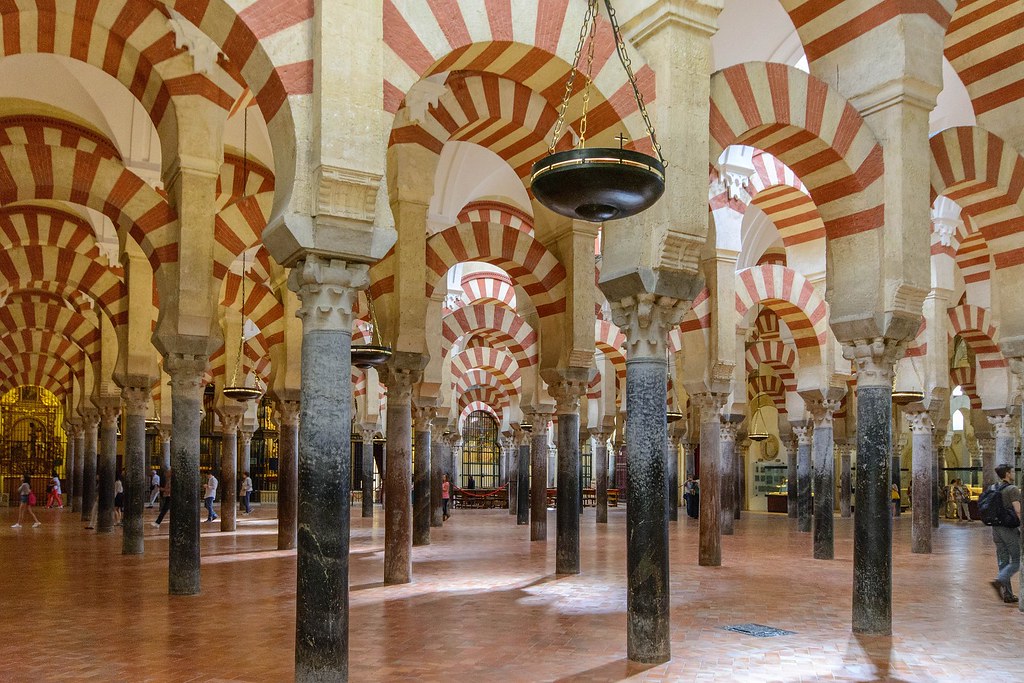
Start your day in Cordoba visiting the Mezquita, the most unique religious building you will probably ever see. The official name is the Mosque – Cathedral of Cordoba, or The Cathedral of Our Lady of the Assumption, and it is one of the most important monuments of Moorish architecture.
Both the inside and the outside of the Mezquita have intricate architecture, combining so many different styles and construction materials.
The entrance to the Mezquita is through the Patio de los Naranjos (the orange trees patio), a beautiful courtyard paved in cobblestone, and landscaped with orange, cypress and palm trees.
The most prominent feature of Mezquita is the arcade hall, with 856 columns made out of pieces of an old Roman temple, which occupied the site before the Mosque was built. They include marble, onyx, jasper, granite, and porphyry, supporting the double arches on the ceiling.
As the Mezquita is a huge place, I highly recommend a guided visit, with a professional guide who will explain the history of the Mosque-Cathedral and point out all those architectural gems that make it such a special landmark.
Mezquita is not only a stunning place to visit, but also a symbol of peace. Centuries ago, Cordoba was an enriched cultural city, where Christians, Jews and Muslims lived together in diversity and peace.
Stroll Around the Alcazar of the Christian Monarchs

The Alcazar of the Christian Monarchs is another stunning place to visit during your day in Cordoba. Built in the 13th century on the ruins of an old Roman site, the Alcazar has taken different roles during its history, from a royal residence to a military prison.
The most impressive rooms inside the castle are the Moorish style baths which have star shaped skylights for light and ventilation, the mosaic hall which hosts an impressive collection of Roman art from the 2nd and 3rd century, and the Roman sarcophagus gallery, with a sculpture dating from the 3rd century depicting the journey of the dead to the underworld.
One very interesting thing about the Alcazar of Cordoba is that the gardens have been landscaped in a Moorish style, even though they were built by the Christians. With rectangular ponds and running water channels, flanked by orange trees and gardens with aromatic plants, paved with marble floors, the courtyard has been designed to cool down and refresh the hot summer air.
The same as for the Mezquita, a guided tour is recommended, in order to understand better the role of the Alcazar of Cordoba throughout the history.
Cross the Roman Bridge

The Roman Bridge of Cordoba is a symbol of the city. Originally built in the first century, it used to have 17 arches and was a total length of 247 meters. The bridge was rebuilt in the 8th century by the Moors, to the form we see today, and one of the arches was lost, so now there are only 16. Out of all the arches, only two are still original, as the bridge has been renovated several times during the years, the last time being in 2006.
The bridge was probably part of the road connecting Rome to Cadiz, and originally built of wood. The Romans expanded it and replaced it with stone.
You can get the best views of the bridge from the south side of the river.
Climb Torre de la Calahorra

At the end of the Roman bridge you will find the Calahorra Tower, the gate between two defence towers, built in the 13th century.
Today, the tower hosts a very interesting interactive museum, which shows how life in Cordoba used to be in the 10th century, when Christians, Jews and Muslims used to live side by side in the city. Visitors can also climb to the rooftop, from where you can see a beautiful panorama of the Mezquita, the city and the Roman bridge below. It is a great place to watch the sunset from.
Have Lunch at One of the Cute Outdoors Terraces

Just right of the Roman bridge is the La Ribera neighbourhood, where you will find many outdoor terraces and restaurants serving the menu del dia for lunch. This area of Cordoba is very popular among the locals during lunchtime.
Walk Around Juderia – Cordoba’s Jewish Quarter
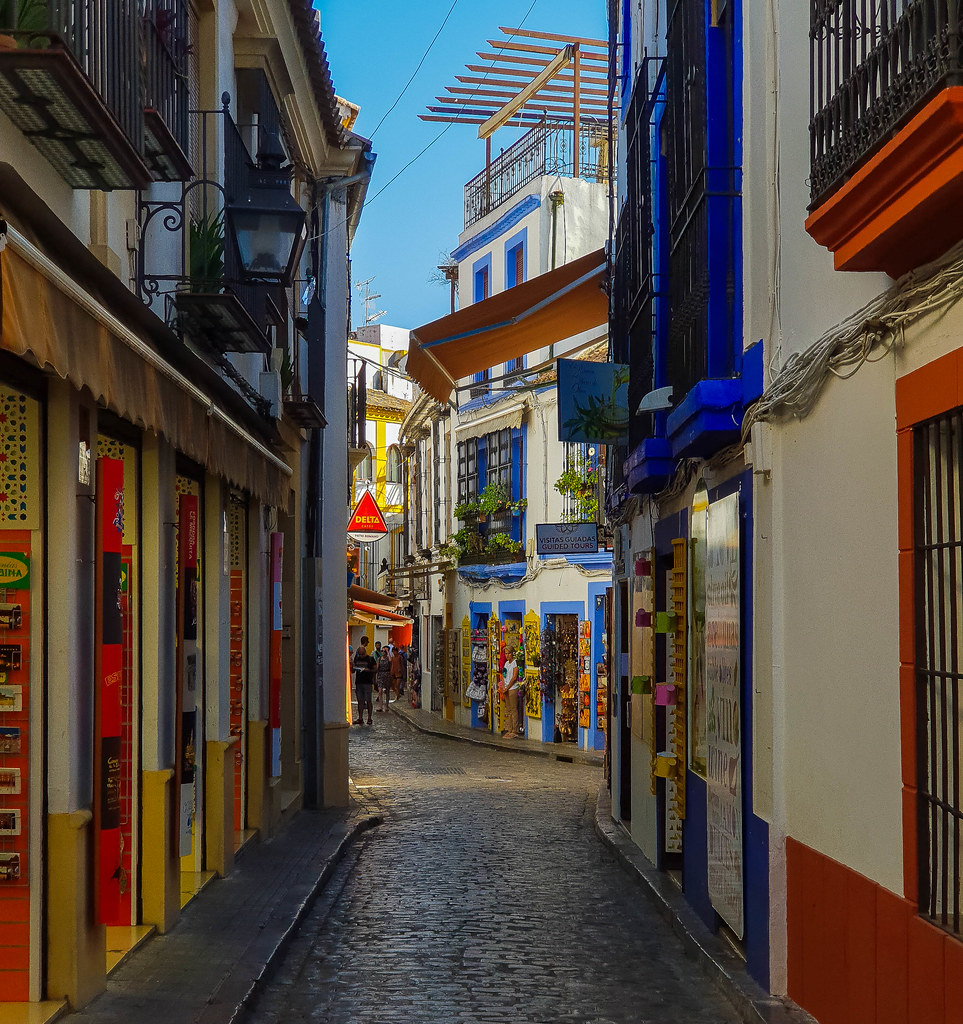
The first Jewish people who settled in Cordoba arrived in the city during the Roman times and lived peacefully, and were free to practice their religion. The Hebrew community flourished during the Muslim occupation, being allowed to trade, establish their own souks and even hold high positions in the society of that time. Their original neighbourhood was destroyed during the Almohads invasion in 1148, so they had to relocate and rebuild their homes in the same area, that has remained until today. They continued their life and trade in Cordoba until 1492, when the Catholic Monarchs ordered their expulsion during the Spanish Inquisition.
Juderia is a beautiful neighbourhood to walk around and learn about how the Jewish community shaped the Cordoba that we see today. The cobbled narrow streets pass through small houses, no taller than two stories high, opening up into tiny squares where you will find local terraces under orange trees. If you love to take photos for Instragram, this area will be the highlight of your Cordoba in a day’s itinerary.
Juderia is also known for the jewellery and silversmith shops, and you will also find plenty of other family owned boutique shops selling clothes, tea and spices here.
Explore the Hidden Patios of Cordoba

Cordoba is famous for having the most beautiful hidden patios decorated with colourful flowers. Every year the city organises a competition to find out which are the most beautiful patios, during which time many private ones open their doors to the general public. The Fiesta de los Patios is a tradition that started in 1918 to honour the residents’ efforts to maintain such beautiful courtyards, as well as to give tourists a chance to see them.
The patios actually have Roman roots. Because Cordoba can get so hot during the summer, the houses were built around a courtyard that kept the residents cool when there was a rise in the temperature. The flowers, water features and the mosaic all contribute to a natural air conditioning.
The patios in Cordoba are actually considered a World Cultural Heritage by Unesco. You can wander around by yourself to try and find the most beautiful patios, or you can join an organised tour. If you don’t visit Cordoba during the Fiesta de los Patios, you can still see some amazing ones at the 14th century Viana Palace, the Law University, the Circulo de la Amistad building, or at any of the churches in town.
Many of the hotels and restaurants in the historic centre have their own beautiful patios where you can relax over some tapas, a flamenco performance, or some local live music.
Have Dinner at Taberna Deanes

After a long day in Cordoba, I ended up at Taberna Deanes as the restaurant I wanted to go to across the street, was closed. I arrived quite early for a Spanish dinner, which was lucky because soon enough the restaurant was filled with people.
The interior of the restaurant is very pretty, with stained glass windows, a traditional patio with a stone fountain in the middle, and flowers on the walls. The menu has plenty of tapas, some very local, such as the Salmorejo Cordobés (a thick cold tomato soup with garlic and pieces of jamon on top) or the Habitas de Córdoba con huevos de codorniz (local broad beans with quail eggs). The prices are more than reasonable, with most tapas costing around 2 euros.
Have a Night Cap at Taberna No10
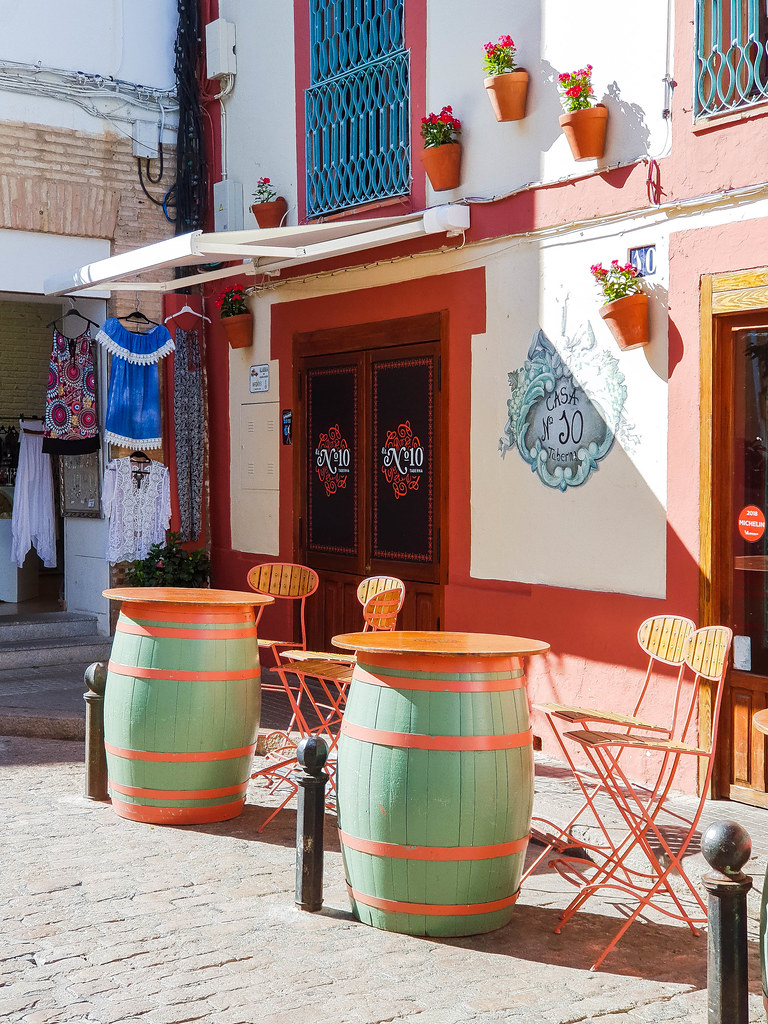
I stumbled upon Taberna No10 several times during my trip to Cordoba, but it was always closed. During the last evening however it was open, so I stopped by for a glass of red wine. The bar is quite small but has a lot of personality. In fact, I later found out that it was included in the Michelin Guide in 2017.
They have a few tables outside, in the shape of barrels. It’s quite nice to have a drink here during the evening, cooling down from the day’s heat whilst watching people pass by.
Staying Overnight? Where to stay in Cordoba

During my one day trip to Cordoba I stayed at the NH Amistad Cordoba Hotel. Visiting in summer, I got a really good deal for this Instagrammable hotel, which is located in the old centre of Cordoba, with its own underground garage.
The room was huge and modern, but what I loved most about the hotel was the different patios and the gorgeous swimming pool. If you want those perfect Cordoba Instagram photos without the crowds, this is the place to stay. I paid 60 euros a night to stay here.
You can check the reviews on TripAdvisor or click here to book directly on Booking.com
For more articles about beautiful Cordoba, check out my recommendations below:
Liked it? Pin it!
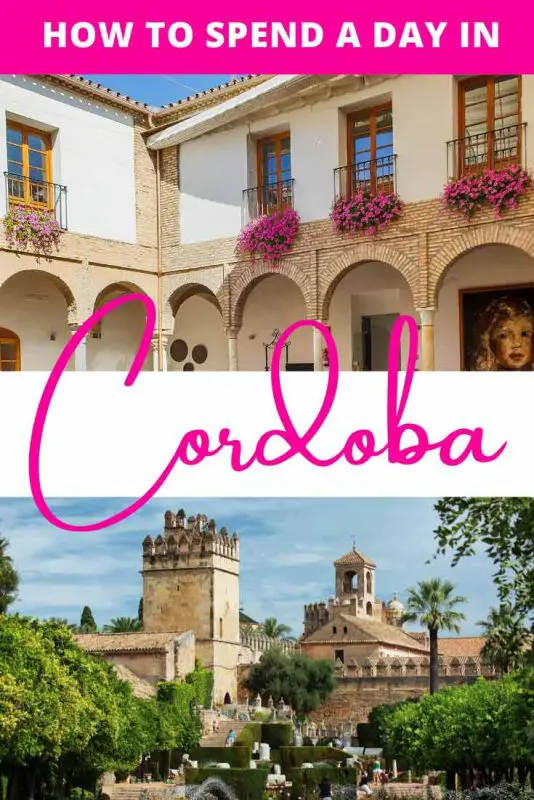
Disclaimer: Some of the links on this website are “affiliate links.” This means that if you click on the link and do a purchase, I will receive an affiliate commission at no extra cost to you. This helps me keep my website running and continue to share my travelling knowledge with you. I thank you for booking your flights or hotels using the links on my website. Regardless, I only recommend products or services I use personally and believe will add value to my readers.

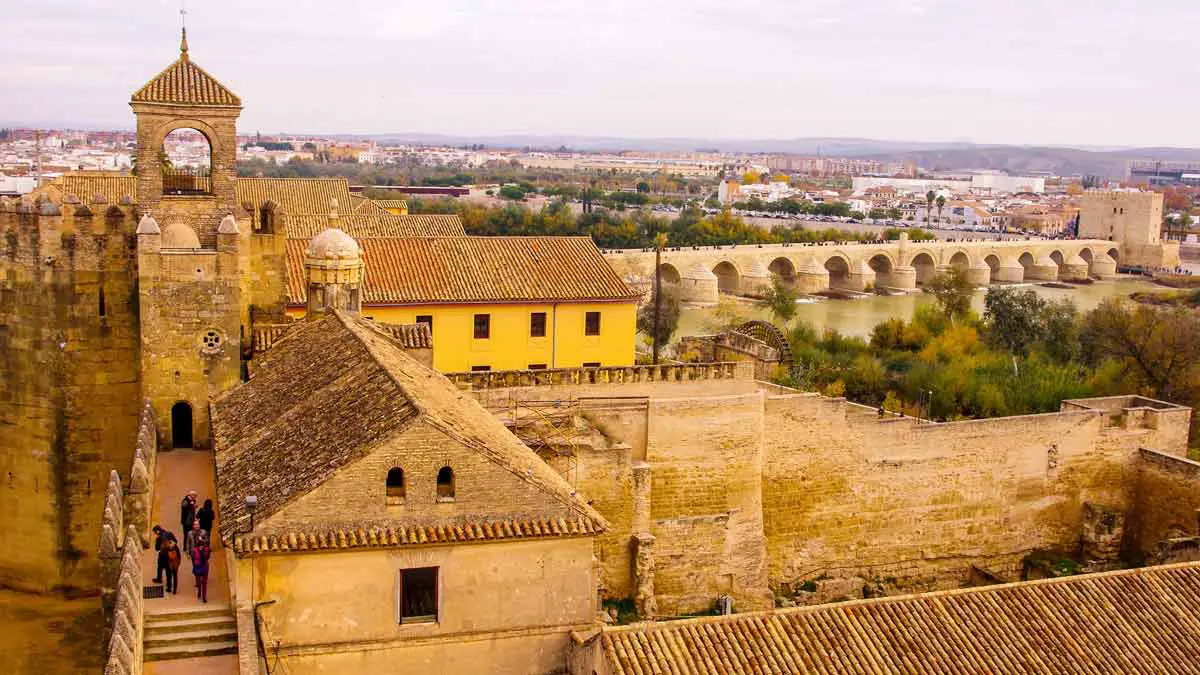




Pingback: 24 Most Iconic Mosques In The World To See Before You Die – The Spicy Travel Girl
Pingback: Top Things to Do in Córdoba - Andalucia In My Pocket
Pingback: Top 20 Vegetarian Spanish Tapas to Try in Andalucia - Andalucia In My Pocket
Very nice article Joanna! I love how you’ve gone into how to get there and also where to park, which could be very handy to some!
I visited for one day in the past and am super eager to go back! love your photos, and thanks for sharing some great info! super helpful